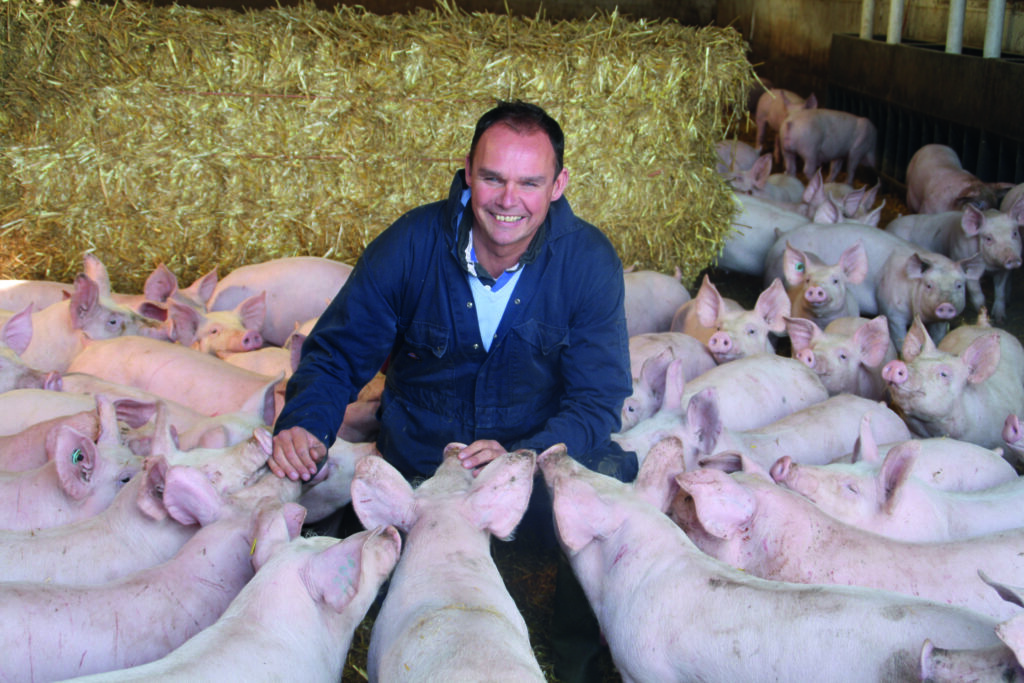The new antibiotic targets will be a challenge, but the pig sector is more than capable of rising to it, according to National Pig Association chairman Richard Lister.
Mr Lister, who played a major role in setting the targets, has made huge strides to cut usage on his own farms in Yorkshire and Nottinghamshire and has seen this repeated across the industry over the past 18 months. But with others yet to fully embrace the challenge, action will be needed from everyone if we’re going to meet the 2020 target, he said.
“It’s a challenging reduction,” he told Pig World. “From my own experiences, we have managed to make some pretty big changes and I know of a lot of producers who have done likewise. Undoubtedly, it will be challenging where people are in a particular disease situation and they may need to use mass vaccination. But for the whole industry, it is a target we can achieve.
“I also know of producers who haven’t really challenged usage yet, so they will have to make improvements. There’s no doubt there has been a level of habitual use where we have medicated for a problem and then continued medicating, so there will be some very easy wins for the industry.
“If people have excessive usage that is no longer acceptable and they are going to have to change their strategy and use less antibiotics. That might take the form of a restock or partial restock, autogenous vaccines, improved biosecurity, or whatever.”
One of the outstanding questions is how targets applying to the whole sector will be policed on an individual level, given the vast range of antibiotic usage.
Mr Lister said the industry should strive to avoid legislation.
“Whether we have a red and yellow card system is yet to be decided. We have an opportunity to police it ourselves.
“At the moment, that is on a voluntary basis and people have responded to it. If we can avoid statutory regulation, we can remain in control.”
Mr Lister said there would also be pressure from the supply chain and retailers will want to know what their suppliers are using.
However, he said there were no signs at this stage that retailers wanted to make antibiotic use a ‘competitive issue’.
How to cut antibiotic use
Based partly on his own experience, Mr Lister outlines the keys to reducing antibiotic use:
Attitude: The cheapest thing is attitude. The first step is recognising that each and every one of us has a responsibility to use antibiotics judiciously in order to safeguard them for the future.
The courage to cut: We had been medicating animals on a preventative basis because we have got a known problem. We had the courage to take that medication out and see how the pigs pulled up. It’s been a pleasant surprise. We have seen a bit of slippage in feed conversion ratio but we have also seen some savings. I would say we have been cost neutral.
Re-investment: The most expensive thing is re-investment in modern, environmentally controlled housing. If you can provide a pig with a clean, closed environment, you leave it less open to some of the variables that can affect health.
Autogenous vaccination: We have used autogenous vaccines (specifically created for a unit’s disease challenge). Although there is a cost, we have seen real longer-term benefits in pig health, addressing a major issue we had.
Improving biosecurity: Pig farmers need to ensure they are doing everything in their means to maximise biosecurity and hygiene to keep their pigs healthy in the first place.
Water medication: Medicating in water can be more targeted and enable you to respond a lot quicker to a disease problem, where soluble antibiotics are available and where your water system permits. In-feed medication is very simple but can be an inefficient way of administering medication.
Overcoming zinc loss: The loss of zinc oxide could be a major spanner in the works. We will need to find alternatives.
Seek help: Being part of a vet group has been a huge help to me. There’s always help out there from your, vet nutritionist o AHDB, for example.




